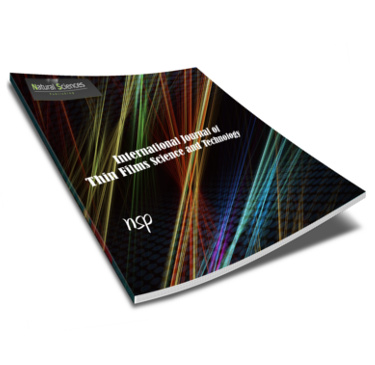International Journal of Thin Film Science and Technology

Abstract
Zinc oxide (ZnO) is a binary semiconductor material with direct band gap (3,3 eV) because of their good optoelectronics properties. ZnO thin films find several applications such as: solar cells, gas sensors, piezoelectric sensors, waves guides. ZnO thin films can be prepared by several techniques: spray paralysis, thermal evaporation, reactive sputtering, sol gel, laser ablation. In this present work and in order to obtain conducting transparent layers, ZnO thin films were deposited by ultrasonic spray technique on glass and silicon substrates. The investigate is focused on the doping level influence of the structural, optical and electrical properties of ZnO thin films. Two dopants were used Bismuth and Aluminium. In the starting solution Bismuth and Aluminium where used with a variation of the doping rate from 0 to 5 % mol . X-ray diffraction patterns confirm that all films are crystalline and the preferred orientation depends on the dopant nature and concentration. The optical characterization of deposited films was carried out using UV-Vis spectrometry in the spectral range 200-800 nm. The analysis of the transmittance spectra allows us to deduce the film thicknesses optical band gaps, and Urbach energy. Hence, the values of the gap were found to be between 3.19 to 3.31 eV. The electrical measurements were made using the two points technique. From the results, we concluded that the electrical conductivity of doped ZnO layers is higher than that of undoped layers and the effect of Bismuth was more pronounced on the evolution of the conductivity than Aluminium.
Recommended Citation
Chouikh, F.; Beggah, Y.; Ariche, N.; Biréme, M.; Leroy, G.; and Waldhoff, N.
(2019)
"A Comparative Study of Al and Bi Addition in the Transparent Conductive ZnO Thin Films Prepared by Spray Ultrasonic Method,"
International Journal of Thin Film Science and Technology: Vol. 8
:
Iss.
3
, PP -.
Available at:
https://digitalcommons.aaru.edu.jo/ijtfst/vol8/iss3/2

